!poke774
!nonushi
!nomouse
!ideology:democracy
���ꗗ(�ǂ�������e�͓���)
https://fox-tools.pages.dev/html/hinan-bbsmenu
https://fox-tools.pages.dev/html/hinan-bbsmenu.html
▶�Ղɂ�@���̃Z�[�u�E���[�h���@�͉��L�X���Q��
���Ղɂ�@���ۑ��@�\�������[�X���܂����I�I�I�I�I�I�I�I�I
http://bbs.punipuni.eu/test/read.cgi/kakovaporeon/1695908906/
▶���ɂ����Cookie��������Ȃǂŕp�ɂɃ��Z�b�g�����l�͉��L�X���Q��
���Ղɂ�@�����x�����オ��Ȃ�(�������݂̂��тɃ��Z�b�g�����)���ɂ���
http://bbs.punipuni.eu/test/read.cgi/kakovaporeon/1696680201/
���O�X��
�h�e����G��L�����v82
http://bbs.punipuni.eu/test/read.cgi/vaporeon/1703502250/
�h�e����G��L�����v83
http://bbs.punipuni.eu/test/read.cgi/vaporeon/1704078413/
���X����\����OFF�ɂ��܂����Ԃ��I
���������݂ɕK�v�ȍŏ����x����2�ɐݒ肵���Ԃ��I
���˂��݂�����o�ւɂ����Ԃ��I
��poke774��L���ɂ����Ԃ��I
�����̃X���͖��剻����܂���🗽
�C���t�����s���Ă�炵���Ƃ͕�����
�}�X�N���ւ��ꂽ�e���ŃC���t�����s���Ƃ����
�m��ʊԂɃR���N���[�̃R�C���W�܂��Ă��݂����ŋ}�ɐi�����ꂽ
���������������l�ɂ͈������܂ʂ��Șb��Ȃ�
�����N���Ȃ��͂����Ȃ��c
�Ԃ��̃^�}�S���Y�߂���Ă��������c
�}�X�N�t���[�P�m�[�K�[�h�̓�̂������ʋΓd�ԂŃ}�X�N�}���ɃE�B���X���o���܂��Ă���
�|���Ȃ��H
������݂Ƃ��P�����͎d���Ȃ����Ȃ��Ďv������
ႂ����悤�ȊP�����x������悤�Ȃ̂͑f���Ƀ}�X�N���Ă������Ďv����ˁc
�C�O�̐l���b���Ă���e��
���{��ɖ|�Ă����\�t�g�Ȃ��H
�������������Ƃ̓_���I😾 �y�i���e�B�Ƃ��� 5000₱ �v�����܂����B
��ŗ}���邱�Ƃ��炵�Ȃ��܂�10�����炢�P���܂����Ă�W�W�C�����Đk������
���̎����}�X�N�����ŗ₽����C�z�����ނƂ����₦�����Ō�����
�C�ɂȂ��Ăǂ����Ă��G���ď��ɂȂ����Ⴄ💦
�����Ȃ�Chrome�̊g���@�\�ɂ��肻���H
�e�L�X�g�Ƃ��Ďc�������Ȃ玩�������N�����n������Ă����|��̓�i�\�������Ȃ���Ȃ��H
�G�b�b�b�b�b�b�b🥺🍄💦
���C���
���m�N���Q�̓`���`���̃��^�t�@�[�c���Ă��ƁI�H
���S�ɉ��Ă��炶���x��₩���
🐕👈🤭����
�Ȃɂ��̂Ђ�
���܂�^�`
�����琼���ł��Ƃ����`���̐��_
https://bbs.punipuni.eu/test/read.cgi/vaporeon/1700732128/
���̂�������������������Ė{�ƎG�k�ł��b��ɂȂ��Ă���
����Ă��킱���炱�����܂�
�I�}�\�R�[
����ȃS���S���|�P��������Ղ�🙀

https://i.imgur.com/lo1VasN.jpg

https://i.imgur.com/Yzrkp0D.jpg
�|���S������😭
���Y���Y���Y���狳�狳��
�␣���v���e�N�g�������Ăđ�
�܂�TNC�����̉\�������邩��c
�a�c���`�[��2�ʂ̏��������グ2���ɏ���������x�e�����Ȃ̂Ƀv���e�N�g�O����Ă���������Ȃ�
�b��쁨�C�P�����h��1�ōD�����Ă��郊���[�t�Ȃ̂Ƀt�@���ɘa�c����Ȃ��Ă����Ȃ�܂��������E�E�E�H�Ɛɂ��ސ������Ȃ��Ȃ�
�N�������Ȃ��߂������E
4070TISuper��4080Super�ɂ��邩�c�c🤔
�傫�������ς����r�߂���
���N�҂��}�ɓǂݕԂ������Ȃ���
�̒��ɑ啪���E�����݂���
��{�������������ݖ����ۂ���
�ް�ޯ���ޯ�ޯ�ޯ�ޯ��-������-���ް�ޯ�ޯ�ޯ�ް���ް
ttps://game.watch.impress.co.jp/docs/news/1559855.html
ttps://www.mary.co.jp/mary/topics/231130_pokemon.html

https://i.imgur.com/epyAqeM.jpg

https://i.imgur.com/srwOrDp.jpg
8��9���ɂ��邼
�������ȃ\�j�b�N�U�w�b�W�z�b�O���
�\�j�b�N�U�w�b�W�z�b�O�͌����炦���������H
������������part2��������₻�ꂪ������🍄💦
�O���l�̓P���i�[
���͂���ȂƂ��݂Ȃ����낤���NJ撣���Ăق����Ԃ��˂�
�ڂ��͌�����
�C�[�u�C�̖���������҂͕ϑԂ������Ȃ��̂�
�����X�ԍ�: 190 ����� 1121 ��ՂɂՂɂ��܂���🐾
�����v 1121 ₱�𑗕t���܂����B
�����X�ԍ�: 190 ����� 4545 ��ՂɂՂɂ��܂���🐾
�����v 4545 ₱�𑗕t���܂����B
�����X�ԍ�: 190 ����� 112222 ��ՂɂՂɂ��܂���🐾
�����v 112222 ₱�𑗕t���܂����B

https://i.imgur.com/iqZvz8C.png
�ɂ����ĂՂɂՂɂ��Ă���🐕
���[��❤���[��❤�C�[�u�C���C❤�����❤�����❤
���q�݂���
��������Ă��܂�����ӂ��H���Ă����I
�|�P�Z���ŃI�i�z�T���Ƃ������U���Ɗ��Ⴂ���ꂻ��
�q�g�i�[�͖�Ղɂ˂�💦
Android�ł͂�����Poweramp�������
Spotify�_�Ă���͉����f�[�^����Đ����Ȃ����牽�N���g���ĂȂ�����
����ҍs���ƒ��邼
�ϗt�A���⏬���Ȕ�����Ĉ�Ă�Ƃ�
���L����̂������Ղɂ�
�Ђ����������Q��
1�T�ԑ���������^�����Ȃ��������ŐV�̔]�Ȋw�Ɋ�Â�������
�@�@�Q�@�@ �^�P�M�R�A
�@�@�@�@�@�_�M�t��/�@ |�P�Q�Q
�@�@�@f'�-�_,��@ ,���@ ځL �Q�^
�@�@�@�R�@ �@ |�@ l�@�@�@!�P�@ _�M�[�
�@�@�@�@�_�@ �R�@!�@�@/ '�L�P�@,�@�L
�@�@�@�@�@ �__,�T�_,�m��Q_ , �]�L
�@�@�@�@�@�@/ �B�@�@ �B�@�M�R
�@ �@ �@ �@ {�@�@︶�@�@ �@ !
�@�@�@�@�@�@�_�@ �@ �@ ,f��
�@�@�@�@�@ , �'�O'����'T�L�@ �
�@�@ �@ �@ `��� ���@ �M'''''�L
���탈
😻👍
�x��łĂ����̂��Ȃƕs�����炭��ɂƂ������o�Ȃ�x��
���C���o�Ă��ĉɂƊ�����悤�ɂȂ����猳�C���邤���ɓ���
���탈
�܂���ꂽ���_�Ō��ɂ͖߂�Ȃ���ł����ǂ�
�܂Ƃ��Ȕ݂����ȃA�h�o�C�X�W�܂��Ă���
������T�|�[�g���Ă�������I�ȃA�v���I
���̖����|�P�����X���[�v����D�]�z�M���I�I
���ЃC���X�g�[�����Ă����ȁI
https://www.pokemon.co.jp/goods/2024/01/240112_ki01.html
2��3���i�y�j�A�u�V���R�[�����َq�^ �h�I�[�v���A�|�P�����Z���^�[�ɓo��I
�w�|�P�b�g�����X�^�[ �X�J�[���b�g�E�o�C�I���b�g�x�ɓo�ꂷ��|�P�����E�h�I�[�̌`�������V���R�[�����̂��َq�^����B
���َq���͂������A�ď�̓h�I�[�^�̕X�����̂��I�X�X���I
�g�Q���o���Ă���h�I�[�ȂǁA2��ނ̂��َq��1�x��3���A���v6��邱�Ƃ��ł����B
���Ѓ`�F�b�N���ĂˁB
�|�P�����Z���^�[�I�����C���ł́A
2��1���i�j10�����A����舵�����J�n�����I
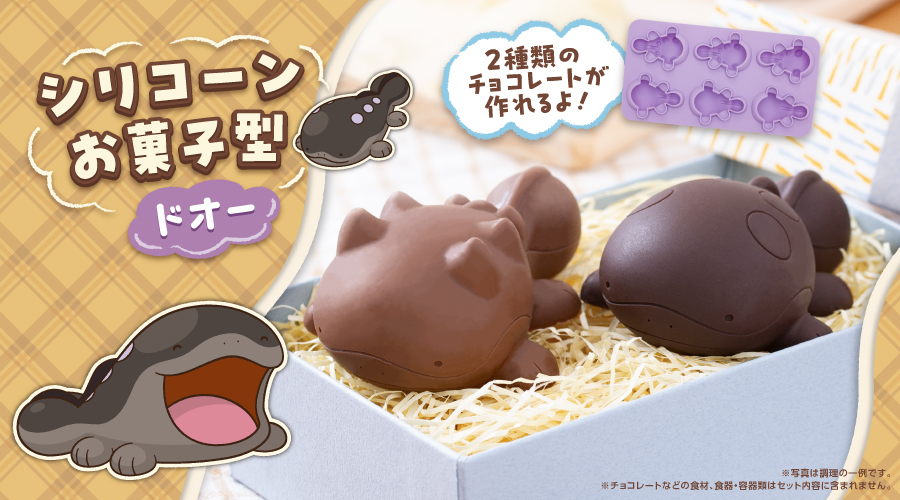
https://www.pokemon.co.jp/PostImages/376c82b91c184731848b28e1a13ffb5f51e84c17.jpg
�h�I�[�ق�Ɖ���
�l�b�g���[�N�����V���wNetwork Engineer Simulator�x���\�B��ʂ̃P�[�u�����Ƃɂ����������Ĕz�����Ă���
https://automaton-media.com/articles/newsjp/20240112-278781/
���ʂɂ�����炱��ȃL���C�ɖ͗l�o�Ȃ��ăK�b�J��������
�E���o�����̃u���b�V���A�b�v�A�]�E����
�������x��łق����Ԃ�😿
�A�N�Z�X���Ə������ݐ����Y���Ă����D��ۂ�😸
�ʐڊ��u���Ȃ��̍�����f���̎�v�Șb���e�[�}�͂Ȃ�ł����H�v
🙀💦
�@�V�����[�Y�����̂ՂɂՂɂ��܂ł���
�@����ς蓮���̂��܂��`�͍ō��ł��ˁv
�|�P�����t�@���T�C�g�Ԃ�😼
�ł���ȏ�@���Ȃ��ł���🤔
�ЊQ���ɂ�����R�~���j�e�B�̈ێ��^�c
�J�e�S���[�ɂ��q�w�̗U��
���{�W�O
����͂����l�ޑ��P���i�[�Ƃ�����̂ł́H
ttps://s.famitsu.com/news/202401/12330808.html
2023�N�Q�[���\�t�g&�n�[�h�̔��������J�B�w�[���_�̓`�� �e�B�A�L���x����ʂ��l��

https://i.imgur.com/mR5hxVC.jpg
�`�������ƃh�I�[ | ��c #pixiv https://www.pixiv.net/artworks/103337074
���̐l�����ƃ`�������&�h�I�[�`���ĂĂ���
�h�I�[���`����������������z���}����

https://i.imgur.com/ZrBjdrX.jpg

https://i.imgur.com/asYxNIO.jpg

https://i.imgur.com/szR4Wdb.jpg
�P���i�[�ƃ|�P���i�[�͔����ɐ��I�n�D�Ⴄ����Ȃ�
����E�ق�M
�ŋ߂͂������������̒j�l�C�����
�䖝���ăG�b�a
����w�܂݂�̃X���^�C�݂�ȉ䖝���Ă���납
�������̎q�����H
����ς�q�g�i�[���ăN�\����
�撣��̎ː�����˂�
�����X�ԍ�: 282 ����� 191919 ��ՂɂՂɂ��܂���🐾
�����v 191919 ₱�𑗕t���܂����B
�C�b�V���n���͒��^�C�v�̐��n😤
������ۂ���������
�@�@�@ �@ �@,-�L�P�P�N�E�A�@�@�@ �@�@�@�@�@��
�@�@�@�@�@ .( �A�@ �@�@ �e�R�@�@ �@�@�@�@ �|
�@�@�@�@�@�@(�@, �R�@�@�@ �@ "�R�@�@�@ �R
�@�@�@�@�@ ,-'�L�P�M�T�L�P�M�R�@ � l�@�@�@�@ �|
�@�@�@�@ .,'�@�@�@ .,'�@�@�@�@�@�@�@| |�@�@�@ ��
�@�@�@�@ i�@�@�@�@i�@�@�@�@�@�@�@ .| |
�@�@�@�@ �R�A�@�@���@�@�@�@�@ .�m�Z
�@�@�@�@�@�@�M'�[-.'�L�M'�[- ''�Li .|
�@�@�@�@�@ �Z�@���@�@�@�@�@ .��
�@ �P�R�A�@�@�@_�m�P�P�P�P�P�P�P�P�P�P�P�P�P�P�P�P�P�P�P�P�P�P�P
�@ �@�@�@�M'� '�L
�@�@�@�@�@�@��
�@�@�@�@�@�@�@�n
�@�@�@�@�@�@�@�@�@�@�@�@�@_i��r-.�A�@�@�@�@
�@�@�@�@�@�@�@�@�@�@�@,,-'�L�@�@�@�m
�@�@�@�@�@�@�@�@�@�@./�@�@�@�@�@.l
�@�@�@�@�@�@�@�@�@ /�@�@�@�@�@�@ l�@�@�@�@�@�Ǝv���`���|�R�|���ł�����
�@�@�@((�@ ���@�@.���@�@�@�@�@�@�@ l�@�@�@�@�@
�@�@�@�@�@ .�R�R�Al�@ i�@�@�@�@�@ .l�@�@�@�@�@
�@�@�@�@�@�@�@�_�R�@l�@�@�@�@�@�@l�@�@�@))�@
�@�@�@�@�@ ,-'�L�P�M�T�L�P�M�R�@ �l�@�@�@�@�@
�@�@�@�@ .,'�@�@�@ .,'�@�@�@���j.��l�@�@�@�@�@
�@�@�@�@ i�@�@�@�@i�@�@�@�@�@�@�@ .i
�@�@�@�@ �R�A�@�@���@�@�@�@�@ .�m
�@�@�@�@�@�@�M'�[-.'�L�M'�[- ''�Li .|
�@�@�@�@�@�@�@�@���@�@�@�@�@ .��
���߂̃R�s�y�̃l�^�ł��c
�����X�ԍ�: 290 ����� 191919 ��ՂɂՂɂ��܂���🐾
�����v 191919 ₱�𑗕t���܂����B
�@�@�@�@�@�@�@�r�@�@�b�@�@�O�@�@���@�@�@�@�@�M�@�@�i
�@�@�@�@�@�@�@�@�@�@�@�@�@�@�Q�Q�Q_�@�@�@�@�@�@�@�@�@�@�@�@�@�@�@�@�@�@�@�@�@
�@�@�@�@�@�@�@�@�@�@�@�@�^�@ �@ �@�@�_ �@�@�@�@�@�@�@�@�@�@�@�@�@�@�@�@
�@�@�@�@�@�@�@�@�@�@�^�@�@.�a�l� �@�@ �_�@�@�@�@�@�@�@�@�@�@�@�@�@�@�@�@�@�@
�@�@�@�@�@�@�@�@�@���@ �@ �a �� � �@�@ �@�_�@�@
�@�@�@�@((�@ ���@��. �@�@�� �l ���@�@ �@ �@�_�@ �@�@�@�@�@�@�@�@�@�@�@�@�@
�@�@�@�@�@�@ .�R�R�� �@ ����:::���R;�@ �@�@�@ ���@�@�@�@�@�@�@�@�@�@�@�@�@�@
�@�@�@�@�@�@�@�@�_�R�@ ����:�E::�����@�@�@�@ ���@�@�@�@�@�@�@�@�@�@�@�@�@�@�@
�@�@�@�@�@�@�@�@ ,-'�@�@ ����::::���� �@�@�@�@ ��))�@�@�@�@�@�@�@�@�@�@�@�@�@�@
�@�@�@�@�@�@�@ .,'�@�@�@ . ����\�����@���j.��l�@�@�@�@�@�@�@�@�@�@�@�@�@�@�@
�@�@�@�@�@�@�@ i�@�@ �@�@ �@�_.�� �^�@�@�@�@ �m�@�@�@�@�@�@�@�@�@
�@�@�@�@�@�@�@ �R�A�@�@�@�@�@ �� �@�@�@�@.�m �@�@�@�@�@
�@�@�@�@�@�@�@�@�@�M'�[-. �Q�Q - ' '�Li .| �@�@�@�@�@�@
�@�@�@�@�@�@�@�@�@�@�@���@�@�@�@�@ .�@��
���N�o���X
���b�L�[/�n�s�i�X
�}������
�k�����S��
�悻�ł̃C�[�u�C���C�c�����Ђ�����ϑ�
�����l����ƃK�b�t�F�݂������
�C�G�b�T�����ő�������
��ꂻ�����ȃf�u����
���͂�Ղɂ��z�[��
���ꃏ�C👉
5ch�͕������猩�ĂȂ���
�\�V���Q���͂�ׁ[�����Z���Ă��������O
���������������C�[�u�C���C�̃P�c�A�i���L�����邾����
�ߑa�ߑa�������L�������Ȃ�����
����ǂ������疳������ł������ǎ��X�͐����m�F�����Ă�
�����̋������߂��d���Ȃ���Č����Ă�l�����邯�ǂǂ����Ȃ��
�Q�l�̂��߂�
������؋��ɑi������\���������ˁc
�m����
�n���B��������Ă��鋰�|���烄���ꂽ�������b������i���ɂ����Ȃ�͖̂{���₵�A���̃n�[�h�����z���đi�����Ƃ��Ƀ��b�����̍߂��d���Ȃ�̂��{����
WIN WIN�����
���Ɛ��s�ҔF��͂��ꂻ��
�̓_�]�X�̖��͂ǂ��Ȃ�����
�����x�点����🙄
�ُ킾�悠�̃e�X�g
1.fury
2.catgirl
3.blow job
4.sole female
5.shemale
���😳
��������😸
�p��
��1
���̉p����140�����ȓ��̓��{��ŗv�Ȃ����B
Kemono is a genre of Japanese art and character design that prominently features fictional anthropomorphic animal characters in human-like settings and situations.
It is used widely in drawing, painting, manga, anime, and video game designs, many of which are popular in the rest of the world. Human-like animal characters are called Jujin ("Beastman, or less literally, therianthrope").
The style combines popular character design with animal traits deemed cute and endearing. It can be largely agreed upon by the fandom that the kemono style lies in the face and the eyes. (Examples include smaller snouts and big anime eyes.)
Kemono characters can also have varying fur textures, example (fur with a pronounced, "fluffy", texture.) The Kemono style is not just "Moe" though and it can come from a variety of anime styles.
Most kemono character designs retain a fundamentally human personality, seldom acting like the real animals after which they are designed.
As such, kemono are usually shown living the way normal humans live in the same setting: speaking a normal language, wearing normal clothes, eating normal food, living in normal homes, in ways that blur their distinction from ordinary humans.
Although this can vary from creator to creator. It highly depends on the creator and the character.
Currently, kemono art is often distributed through Japanese fanzine circles, "doujinshi." Fans of kemono are called kemona or kemoners, from kemono and English -er; this had once been controversial.
There is also kemono which depicts young animals, much like cub art: kemololi (female cub) / kemoshota (male cub).

https://i.imgur.com/tD7H7H2.png
�]���ڂ��ゲ���I
�H�ׂ��Ⴂ����
�ق�܃Q�[�t���͂��܂Ōo���Ă��Q�[�t��
�@ �������������@ �@ �@ �@ �������������@ �@ �@
���@ �����@ �@ ���@ �@ �@ ���@ �����@ �@ ���@ �@ �@
���������@ �@ �����������������@ �@ ��������
�����^
����v�����^�[�ŃK�`�������������ǂ�����
�O�i�����Ȃ��Ȃ��Ă����ƌ����͂Ői��ǂ���
����ёւ�������
�V�����[�Y�����̂ՂɂՂɂ��܂�
�ƂȂ�m�������߂�
����킩��
�Q�[�����ɋ}�ɃR���g���[������̏ł���
�\���v���C�Ƃ������I�t���C���̃Q�[���������
�ЂƂ܂��|�[�Y�����Đڑ��������ĂƂ��o�����₯�ǂȁc
������̃R���g���[���[�̂����Ȃ��납
�����C�[�u�C���C�Ȃ��
����������ނ��
��ʐl�����ď�ɒ���t���ꂽ����߂������Ƃ�1��2����l�̂�����������
�}�E�X�g���b�v�ɂȂ�̂��J�ߏ̂�����̂�
������Ώۂł͂��邯��
����noita��������Ă܂�
���`�����e�`�����ɂ��😼
Road96
WorldBox
Raven Field
The long dark
Risk of Rain2
�@�@�@�@�@�@�@�@�@�@�@�@�@�@�@ |�@|/�m��__�]������@�@ �Rƃj����S } ,'�܁R
�@�@�@�@�@�@�@�@�@�@�@�@�@�@ /��!|�@ =�e���āP�R�@�@�@�@�@'�L !o_��M�S�@| i/ �R !
�@�@�@�@�@�@�@�@�@�@�@�@�@�@ ! �n!|�@�@�[���@'�@�@i�@�@!�@ �@ `' �@ '' " �@ ||�R�@l |
�Q�Q�Q�Q�Q�Q�Q��,��Q| | /�R!�@�@�@�@�@�@�@�@|�@�@�@�@�@�@�@�@�@�@�@ |�R i�@!�Q �Q_�Q�Q�Q_
�P�P�P�P�P�P�P'`'`�P �R { �@|�@�@ �@ �@ �@ �@ !�@�@�@�@�@�@�@�@�@�@�@|Ɂ@ / �P�P�P�P�P�P
�@�@�@�@�@�@�@�@�@�@�@�@�@�@�@�R�@ |�@�@�@�@�@�@�@ _ �@ ,��@ �@ �@ �@ �@ �@ !�@, ��
�@�@�@�@�@�@�@�@�@�@�@�@�@�@�@�@�_ !�@�@ �@ �@ �@ '-ށ@�] ށ@�@�@�@�@�@�@�@��'
�@�@�@�@�@�@�@�@�@�@�@�@�@�@�@�@�@ �M!�@�@�@�@�@�@�@�@�@�@�@�@�@ �@ �@ �@ /
�@�@�@�@�@�@�@�@�@�@�@�@�@�@�@�@�@�@�R�@�@�@�@�@ށ@�P�@ �P �M�@�@�@�@ / |
�@�@�@�@�@�@�@�@�@�@�@ �@ �@ �@ �@ �@ |�_�@�@�@ �@ �[ ���] �@ �@ �@ , �� !
���ʂȐl���߂��ċ�����
�Ƃ肠����worldbox����������
�����ڂ����Ŕ��돔���v���o����
�������₻��Ȃ��Ȃ�
���������v�����ǂ܂�1�N���o���Ė�������
�Ǘ��l�������Ă��₵���Ȃ���
�ĊO���q�݂����ŃC�P�邩������Ȃ�
���Ȃ������\�߂Ƒ���߂ői���܂��I
���R�͂����������ł��˃b�I
�F�Ⴂ����Ȃ���ŋ�����
�Ǘ��l��A��X�������Ȃ��ő����Q�Ă�������
���h�Ȃ�����Ă���
�ڂɋ��܂���
���肽��
���{�ς݂��ĂȂɁH
�ڂ���
���X���Ŗ��O�����{�ς݂ɂ��Ă���
���̂܂܋L������Ăď������݂��Ă��������
FANZA�̃G���\�V���Q�X�����ĂăA�C�M�X���ăQ�[���̉���̘b��U�����烌�X�o�n�܂���������c
�X���̒��Ղō��ł��i���T�X������Ă����H���ĕ�������Ȃ��X�o�̉Γ_���������
�܂��Ԃ���8������
�ł������ɂ͎����Ă��Ȃ��ăC�[�u�Cฅ😿ฅ💦
�܂����l�̍D�݂͏\�����d�����ׂ��₯��
��������q�g�Ɏ��������[���Ă����͂�덷�݂����Ȃ����Ȃ�
https://e621.net/posts/4517996
�ЂႾ♡���ĂȂ����Ⴄ����
����J�X����������炵��[�Ȃ�
�����܂Ń|�P�����̓L�����N�^�[�Ő����͊O���ł��鎖�𗝉����đn��A���M���悤
���䂩�����d�_
���̌��̃n�o�^�N�J�~������������

https://i.imgur.com/kxEL4XI.jpg
�P���i�[�͒�������+�q�g�v�f�Œ�`�����P���m�����Ă�������|�P�������푰�ɂ����Ȃ����Đl�������푰�|�P�����̃I���L��������������E�G�ɂ���
�|�P���i�[�̓L�����N�^�[�D�����ĂƂ����痈�Ă�l�������낤����p�ς���̌��������������q�g�}�����邭�炢
�D���ȃL������������Ă�G���o�Ă��ĕs�����o������ė��ꂪ�傫���Ǝv���Ă�Ղ�
�I���W�i���̏b�l�Ȃ�������낤�������V�K�����悤�����ꂪ�I���W�i���Ȃ��炻��͂���ł�����
�Ⴆ�͂����P�Ń|�P�b�l�{�o���T�[�N����`���G�t�������邯�ǂ�����ɕ`���̂�߂�Ȃ�Č����l������|�P���i�[����������ڂŌ����邾�낤���]��NG���邭�炢�����Ȃ����
���Ƒ����̊G�t�ɃP���`���P���}���̒m�������߂�͍̂���������̊܂߃J�W���A���w�̊l�����R�~���j�e�B�����̏�ł͑���Ǝv���Ղ�
����Ƀ��U�[�h���̂���Ȃ������Ȃ����ˁc😺
�̘̂b�Ƃ͂���
�P���m�ɐl�̋�����������Ȃ�
�P�����Ɍ���ƂȂ�����Ƃ�😺
�l���̏펯������������ł��d���Ȃ����
���������̃P���m��furry=�q�g�̌`�����������ĂƂ��납��l����ƊO��Ă͂Ȃ�����
���g�Ƃ��`���l�̍D�݂Ƃ��͑傢�ɂ��邯��
�����t���Ȃ���Ύ��R�ɂ��ŏI���b�₼😾
�m�����A���̓����ł��D�P����Ɠ���̎���̖т������Ȃ邱�Ƃ��������
https://youtu.be/IEgn7x_aQ1Q?si=-EBvi4Zs-BuaZCMN
AI�u�����̂����v

https://i.imgur.com/aKxyJZS.png
���킢��

https://i.imgur.com/hucjlXm.png
��
�ՂɂՂɂ��܂悧������������
>>618!send:1121
�����X�ԍ�: 618 ����� 1121 ��ՂɂՂɂ��܂���🐾
�����v 1121 ₱�𑗕t���܂����B
�T�P�u�V�b�|�����w���ŋ������l�ł�🤗
�����X�ԍ�: 620 ����� 1121 ��ՂɂՂɂ��܂���🐾
�����v 1121 ₱�𑗕t���܂����B
�ǂ����l���Ĕ����Ă܂�
����͌Î��L�ɂ�������Ă���
���肪�Ƃ��������܂��ł��Ԃ�😻
�E�C���f�B�Ŕ�����
�������ŃV�R�V�R���Ă������
�����͂������z�c�ʂ��ʂ����C�ɂȂ邩��N������I�J�Y�T���Ă݂�c
😚
�Ȃ�ID��Gay�̖͗l
�����X�ԍ�: 638 ����� 4545 ��ՂɂՂɂ��܂���🐾
�����v 4545 ₱�𑗕t���܂����B
�I�X�����X���i���O���h�X�P�x�����😳

https://i.imgur.com/eXZStl7.jpg
�X���[�p�[��낵���G�b�`�Ȃ��Ƃɗ��p�����|�P�����ł͂��肻��
����

https://i.imgur.com/OItNWMl.png
�Ԃ�����U�����ĐQ��😿
���q�݂��ĂȂ����炾��
�Ŕ�������😍
���N�͋x����😿

https://i.imgur.com/e2ivBuQ.jpg
�̂�т�x���🥺
���܂ɎU���ɏo�ď����Âs�����������Ƃ�����
�����̃E�C���X���킢
���厖�ɂ���
�����Ƌx�����˂�🥺👐🛌
������EVY�\�L��EV��Evil(��)�Ƃ��ǂ߂���
���������C�t����ՂɂՂɖ��I
���킢����
�L�m�R�̂ق����Ԃ���������
���X666��������Ⴄ���A��N����
���ꂦ����
���厖�ɂԂ�🙀
���厖�ɂ�
���X�ԍ���666�c�c�H
���V�A�A�A�b
�Ă��������̃X�����Ă��̖{�l��������🥺💦💦
�g����������镨���Ȃ��̂�
����Ȕ��Ă邹������😿
���C���������������Ĕ������Y��
�����Ă���l����🤗
���σ|�[�`�݂����ɏc�ɍ�������j�������Ă���������Ȃ���
����ɂ��J�T�������Ďז��ɂȂ肻���Ȃ��
���z���������Ȃ���������Ȃ�d���Ȃ���😿
���X�ɂȂ�Ή�������u�C
�P�����݂̂�����s����b�܂ŏb�l�ł͂Ȃ��낤��
�b�l�����͓����A�g�͓̂������̂܂܂�肩�͐l�Ԃɋ߂�(���[�E���t����G�W�v�g�_�b�I�ȏb���l�g�܂�)
���Ċ����̐����͂悭����
���ƃI�X�P����X�P���A�C�O�ł�kemono�̓^�O�t���ɂ����Ă͏b�l������Ă邱�Ƃ������Ǝv��
https://twitter.com/Hozuki_AKane_/status/1747093935732965419
�P���~�~���̓P���x�����Ƃ͂������̃P���x���ƃP���~�~�Ƒ卷�Ȃ��悤�Ɍ�����
���ɍ��i�Ⴄ�̂��P�����Ɠ����x�������͂ł��Ȃ��Ǝv��
�܂�e621��kemono�̗�Ƃ��Ă��ꂭ�炢�ڗ����Ȃ��̂��������Ă邯��
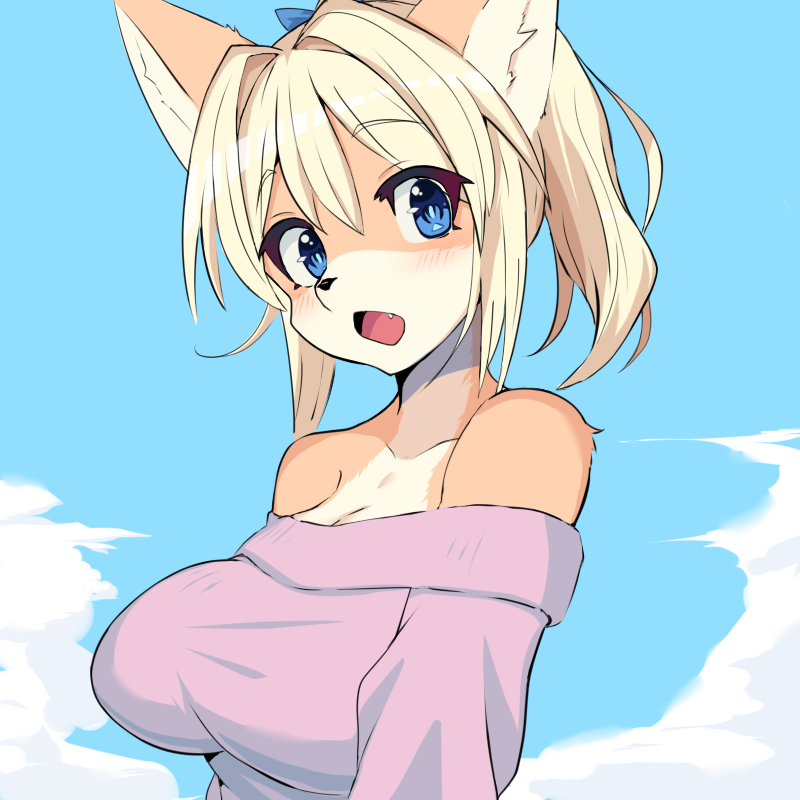
https://static1.e621.net/data/6f/39/6f3973f15a33fdb3659c1b411a4d9715.png

https://i.imgur.com/MiyAAoN.jpg
�����c�H
��Ƌr���l�Ԃ�l�L�������ƈ�C�Ƀ��C�g�����̃P���m�ɂȂ��
�����I�I�I�I
���C�����܂ŃP���m��Ǝv���Ă��̂͏b��������I�I�I�I�I
�߂�����X�b�L�������킠�肪�Ƃ�

https://i.imgur.com/5RzVpL1.gif
�킩��

https://i.imgur.com/0ri8BB0.jpg
���C�����܂ŃP���m��Ǝv���Ă��̂́u�P���m�W�������ɕ����Ă���b�W�������v��������ۂ�
�����Ȃ��Ă����������Ƃ��炢�������ł������������̂ɂ�
�}���\��������{�Ƃ��H
�����Ȃ��Ă��瓝�ꋳ��Ƃ��Ă̍L�����̔\�͂������Ȃ邩��R��ɎE����Ȃ�������������Ȃ��̂��🥺
������
https://michinoeki-houhoku.jp/news/blog/201911234273.html
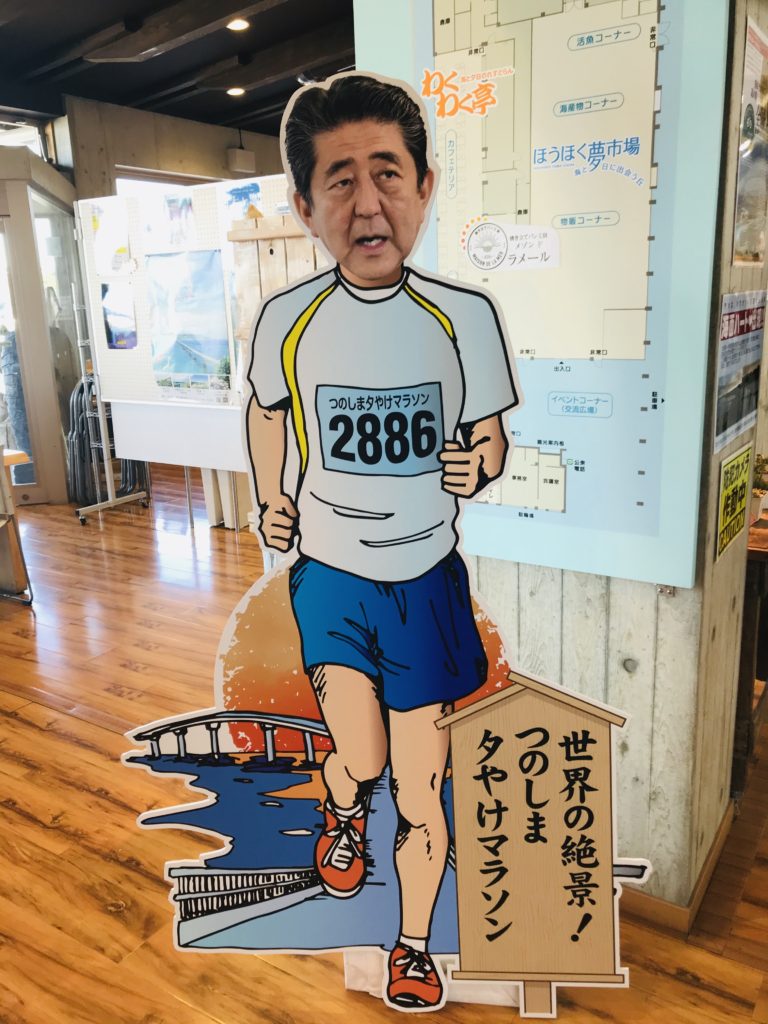
https://michinoeki-houhoku.jp/wp-content/uploads/old/IMG_E4111-768x1024.jpg
��
���{�W�O���C�[�u�C���C���S�z����
https://www.jiji.com/sp/v4?id=201902ege01&p=201902ege01-jpp026430155
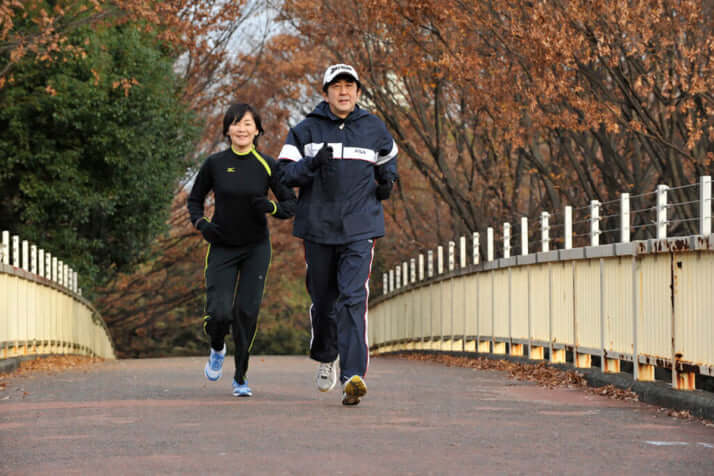
https://www.dailyshincho.com/wp-content/uploads/2022/07/2207081815_3-714x476.jpg
����������O�ɂ����Ȃ��Ă�ȁc�c

https://i.imgur.com/eWB3R0l.jpg

https://i.imgur.com/0LXsLNc.png

https://i.imgur.com/EZY3gS2.jpg
�����c
�_�T��
�p�C�i�b�v���w�A�ɂ���ḕ���Ɍ�����
���ϐ�y�Ɍ�����
���ł��T���Ă����`
�ǂ����Ɉ��{�̎p��
�����ĂċC��������
�₽�������߂����ይ�������t���Ă��Ă��
�{���{���̃��N�[���݂����ȓ����Ă��
�u�[�X�^�[���o�����I🍼💦
�����X�ԍ�: 747 ����� 4545 ��ՂɂՂɂ��܂���🐾
�����v 4545 ₱�𑗕t���܂����B
���[�t�B�A����̂ՂɂՂɂ�����
����t�����Ђǂ��L�l�Ȃ��
�N�̂�����납
��{���ӂ킾���ǎ��X�O���C�V�A���o���������点�邢��������q

https://i.imgur.com/hAu0ZGE.png

https://i.imgur.com/VY1uPXU.png
���厖�ɂ��ĉ�������
�������Ȃ���
���c����ł�💀
�������ȁH
���炠�����Q���
���厖�ɂՂ�
�Ă��lj����L�^�J�~�Ȃ�Ȃ�����e���p�S�X�Ȃ�����ł�����

https://i.imgur.com/VyHrs6c.png
��������
�����X�ԍ�: 838 ����� 2222222 ��ՂɂՂɂ��܂���🐾
�����v 2222222 ₱�𑗕t���܂����B
🙀
���탈
��ꂿ������H😽
�����[�E�o�[�h����🐦
���͉�������Twitter Bird����
e621�ɂ��^�O����
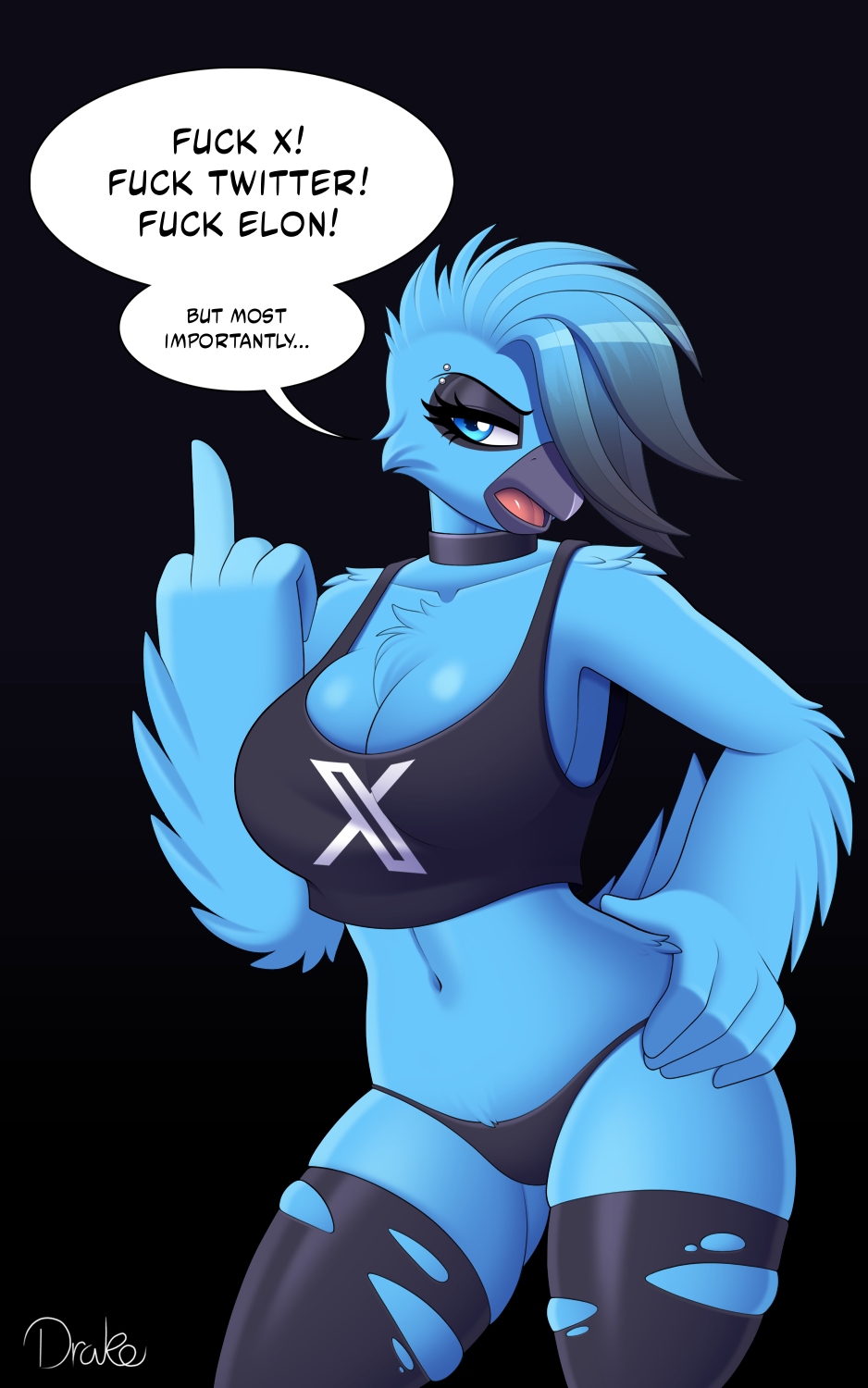
https://static1.e621.net/data/09/8e/098e841823cf0f914865c84a9f055c7b.png
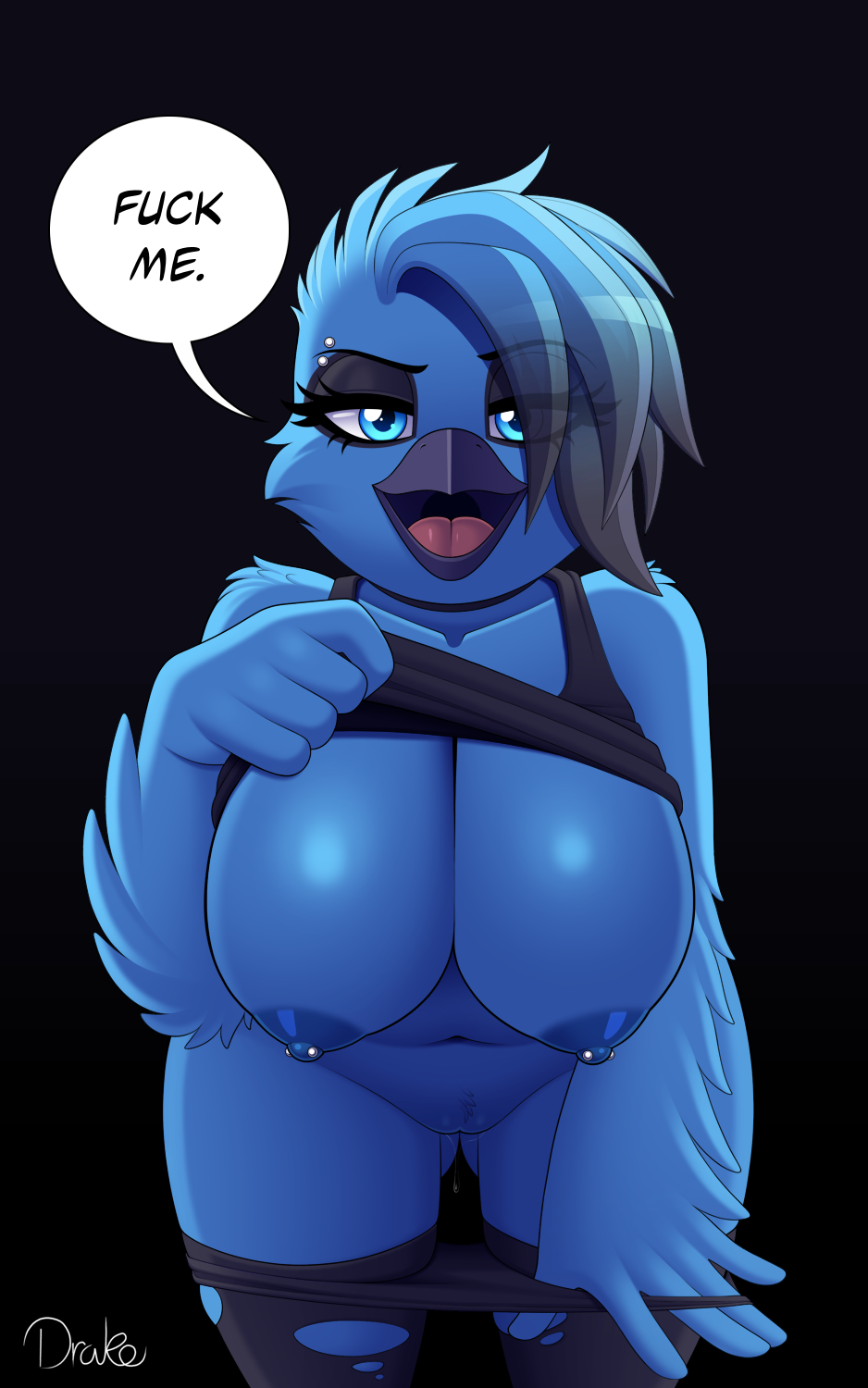
https://static1.e621.net/data/3e/a3/3ea38f74b9154b6b66c355560f3cc360.png
�Ⴂ�q�g���X�͕��ʂɑf�������Ė{���ɐ����Ǝv���ՂɁc�c🙀
�t�@�b�V�����͋C�����ċ����Ղɂˁc�c
�A�J�A�J�A�J�A�J�A�J�A�J�A�J�A�J�A�J�A�J�A�J�A�J�A�J�A�J�A�J�A�J�A�J�A�J�A�J�A�J�A�J�A�J�A�J�A�J�A�J�A�J�A�J�A�J�@�J�@�J�@�J�@�J�b�[�[�[
�ꖇ�ڂ͂��������Ǝv��
��������Ԃ�
��������😳
�ǂ�����☺
��Ђ̈��݉�����
���݂Ƀ����i���[�ł͂Ȃ�

https://i.imgur.com/ffn1RO3.jpg
�G�u�������D��
�q�����ł�����ǂ�����H
���߂�
�X�ɂ������Ƀ\�V���Q�X��������Ă��Ăđ��u�C
�����ł���Ƃ�l����H
�T���L���[�͂�Ђ����
�z�X�e�B���O��Ђ����Ȃ̂�
�p�@���p�@��(��̉�)
�Ӗ��̂Ȃ����O����
�}�N�h�i���h @McDonaldsJapan
������[�I
�`�L���N���X�v�̓}�b�N�`�L��®��
�������I

https://pbs.twimg.com/media/GEAGj4AWoAAkggC.jpg
http://twitter.com/McDonaldsJapan/status/1747740582699475385
���ꉽ���ς�����H
�ς��ƌ��Ӗ������킩���
�A���`���H�N���X�v���`�L��®�ɂȂ�����😤
���^�X���V�����b�h�ɂȂ���
�͂��[
>>924
���^�X���Ⴄ�̂�
�������^�X�����ŗ��ނ���m�����
��A��ؐH�ׂĂ܂����H
�z���g�N�\�Ȏ��₾��ȁB���O������������B
���̎ʐ^���A�b�v���Ă�̂̓C���X�^�Řa�����L�߂���������Ă�̌��Ă킩��Ȃ��H���O�N�\�H���������ӂ��ɖ�͍D�������炽������H�ׂĂ邯�ǃC���X�^�ł�����A�b�v���Ă��N�\�̖��ɂ������ˁ[����B������Ƃ����q���̍��������������낤���O�݂����Ȃ��Ɏגq���ꂽ���Ȃ��ˁB
����͔�����������q���̍����炽������H�ׂĂĂނ��������̕����D���������B����͐H���Ă������܂����������炾�B�����ǖ���ɋꂵ�I�ȕ����Ŗ��H�ׂ��������N�ł�����ďォ��}�E���g�ŃN�\�R�����g����ȃ{�P�B��x�Ɨ����
��
�S�~�ł�
���C��������ƑO�Ɍ������Ĕ��������NJW�O���Ɗ��S�ɕǐK�ł����悱��

https://i.imgur.com/FsFwjxh.jpg
�C�[�u�C���C�̃J�c�I�ߐG��т��߂�������
�R���Ǝv������{���������I
�ӓ_����
�ŋ߂���̃n�`����(��������)�o�[�W�����������탏�C
�����قƂ�Ǔ����ĂւǑS�R�����邩�킢�����
�����ȃT�u�X�N���v�V�����T�[�r�X���������܂��I
�������₢���킹�͂�����܂ŁI����
https://bbs.punipuni.eu/vaporeon/
���قƂ�ǂ����z�����߂����ᑽ�����ǂȂȂ�Ȃ炱����
�h�e����G��L�����v85
http://bbs.punipuni.eu/test/read.cgi/vaporeon/1705586762/
>>972!send:112119
�����X�ԍ�: 972 ����� 112119 ��ՂɂՂɂ��܂���🐾
�����v 112119 ₱�𑗕t���܂����B
���ł��Ԃ�
����🥺
�����X�ԍ�: 972 ����� 2222 ��ՂɂՂɂ��܂���🐾
�����v 2222 ₱�𑗕t���܂����B
�����X�ԍ�: 972 ����� 2222 ��ՂɂՂɂ��܂���🐾
�����v 2222 ₱�𑗕t���܂����B
�ǂ��X�����Ăł�����A�O�ɐi�߂Ă�������
�����X�ԍ�: 972 ����� 1121 ��ՂɂՂɂ��܂���🐾
�����v 1121 ₱�𑗕t���܂����B
�z�c�ɓ���P���ԑO���炢�����̊o���������🙀
. �@�@�q �@�@�M7�L �@ �@�M�R�A
�@ �@�@�R�@�@{�@�@�@�@�@/ ��
�@�@�@�@|!�_ l �@ �@ �@ {�@�@,�r
�@�@�@�@!l�A �MāA �@�@�@���
�@�@�@�@L���Q,! �R--�]'�L�@�
�@ �@ �@ �_//�@︶ // �ځQ_
�@ �@ �@�@���jƁA �@ r����'
�@�@ �@ �@ �@ �@�@| �@�@�R.
�@ �@�@�@z����]'7�@�@�� �@�R�A
�@ �@�@�@�M���_ /�@�@�@l �@ �m
�@ �@ �@ �@�@�@�M�---��'�L
�V�������Ē����Ղ�
�@�@�@�@�@�@�@�@�@ �@ ,.�B
�@�@�@�@ �Q�@�@ __�^:./
�@�@�@�@_}�R��'�].�__,.��R��Q
�@�@ ,.'.:�7�@ 0�@�@O�@�R:.}�-�_:.�__
�@ ,.:'.:.:.).:��@�@ O�@�@�@�@ �'���^.:.:.:.:�M�R t��
�@{.:.:.:.:.�M�R�M �------�]�]''�@>.:.:.:.:.:.:.:.:.:.}
�@�M''�-.::__'�P�M�N�R,..-�]�]��^.:.:.:.:.:.:.:.�^
�@�@�@�@�@�@�P�N�N''��]-::�Q�Q�Q.:�^